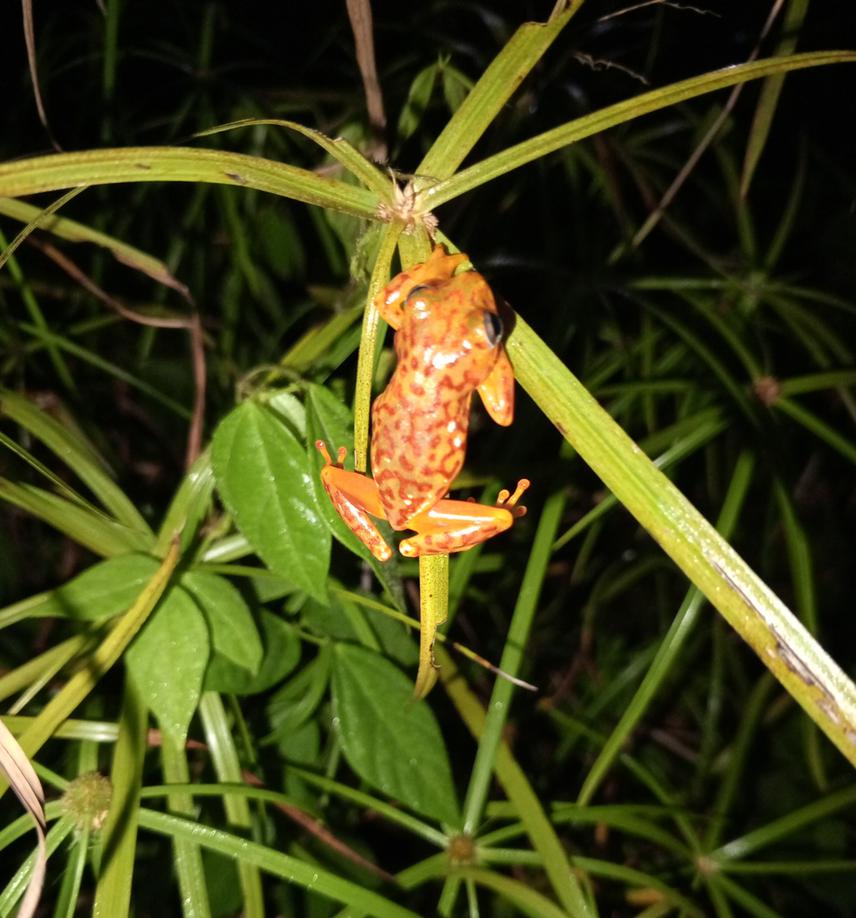Alfayo Koskei
Although amphibians significantly contribute to energy flow in ecosystem, recent studies show that over 1,800 amphibians are at risk of extinction globally and about fifth (235) of species in sub-Saharan Africa are threatened with extinction due to habitat destruction (Krzikowski et al. 2022). Both Hyperolius rubrovermiculatus and Afrixalus sylvaticus are reed frogs that are endangered and endemic to Shimba Hills Ecosystem (SHE) in the southern costal lowland forest of Kenya (Koskei et al. 2017).

Sub-adult female H. rubrovermicalatus.
This ecosystem is facing perturbation from rapid human population growth, expansion of urban and agriculture areas, unplanned infrastructural development and unregulated use of riparian zones and disposal of household wastes (Bwong et al. 2017). This pace of amphibian loss calls for immediate collaborative actions in conservation. While a number of research have been conducted in the area to assess the population status of amphibians in the entire ecosystem, there are not much conservation efforts to halt the loss.
This project seeks to assess the status of the two species and engage local community in their conservation and their habitats. The first objective of this project is to assess the population dynamics of these species in ‘SHE’ and the second objective is to engage local communities in creating awareness and conservation of these species. The third objective is to create sustainable income generation for youth through ecotourism initiatives and assess the potential for payment for ecosystem (PES) in area of amphibian occurrence (AOO).
Header: Adult female H. rubrovermicalatus.